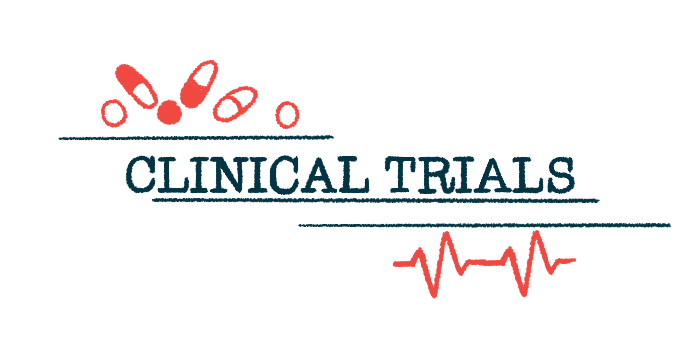Response rates to Recorlev affected by initial cortisol levels: Analysis
Starting cortisol levels may be used to help personalize treatment
Written by |

Lower urinary cortisol levels at the start of treatment with Recorlev (levoketoconazole) are associated with higher rates of cortisol normalization among people with endogenous Cushing’s syndrome, according to new analyses from a Phase 3 clinical trial.
Patients with lower starting cortisol levels also require lower maintenance doses of Recorlev and experienced fewer liver-related side effects.
These findings suggest starting cortisol levels may be used to predict the safety and efficacy of Recorlev in Cushing’s syndrome patients.
The results were presented by Xeris Biopharma, the therapy’s developer, in a poster, titled “Effects of Levoketoconazole on 24-hour Mean UFC (mUFC) in the SONICS Study: Relation to Baseline mUFC in Adults with Cushing’s Syndrome: A Post-hoc Analysis,” at the Endocrine Society’s recent annual meeting, ENDO 2024.
‘Importance of individualizing and tailoring medical management’
“This exploratory analysis brings further perspective to the importance of individualizing and tailoring medical management,” James Meyer, senior director of publications and medical communications at Xeris, said in a company press release.
Endogenous Cushing’s syndrome refers to conditions wherein the body produces too much of the hormone cortisol. The most common cause is Cushing’s disease, where a tumor in the brain’s pituitary gland sends signals to prompt cortisol production in the adrenal glands, which sit atop the kidneys.
Recorlev is an oral therapy approved in the U.S. for adults with endogenous Cushing’s for whom surgical interventions were not an option or were ineffective. It works to suppress enzymes involved in cortisol production within the adrenal glands, thereby lowering cortisol levels and easing Cushing’s symptoms.
The Phase 3 SONICS trial (NCT01838551) evaluated Recorlev’s safety and efficacy in 94 adults with endogenous Cushing’s who had urinary cortisol levels that were at least 1.5 times higher than normal at the start of the study (baseline).
The trial’s first phase was designed to identify each participant’s optimal dosing regimen over a period of up to five months. Patients then received that optimized dose within a six-month maintenance phase. Those completing the first two phases could enter the third phase, in which all continued to receive their maintenance dose for up to another six months.
Top-line data showed urinary cortisol levels dropped into a normal range for nearly a third of participants (31%) after six months of maintenance dosing, meeting the study’s main goal.
Cortisol reductions sustained for up to nearly 2 years
Reductions in cortisol were sustained for up to nearly two years, along with an easing of other Cushing’s symptoms, lowered depression, and increased life quality.
Now, researchers evaluated the potential association between baseline urinary cortisol levels and rates of cortisol normalization at the end of the six-month maintenance phase, without a dose increase during that phase.
Their analysis involved 92 trial participants who had at least one post-baseline urinary cortisol measurement.
Patients were divided into three groups based on their baseline cortisol levels: less than 2.5 times the upper limit of normal (Group 1; 38 people), greater than 2.5 times but not more than five times higher than normal (Group 2; 33 people), or more than five times higher than the normal upper limit (Group 3; 21 people).
In general, patients in Group 3 were younger, more often male, more recently diagnosed, and more frequently on prior therapies than patients in the other two groups.
Results showed patients in Group 2, with intermediate baseline cortisol levels, had the highest response rates, with 36.4% of those patients seeing normalized urinary cortisol levels after six months on Recorlev.
The response rate was slightly lower in Group 1, where 31.6% of patients saw a cortisol normalization, and cut by half in Group 3, where 23.8% of patients achieved such normalization.
Patients with highest baseline cortisol levels required higher Recorlev doses
In addition, patients with the highest baseline cortisol levels (Group 3) also required higher doses of Recorlev during maintenance treatment than those in the other two groups. Specifically, they used a mean of 631 mg daily during that six-month period compared with 475 mg in Group 1 and 548 mg in Group 2.
Correspondingly, potentially clinically important liver-related side effects were more frequent among Group 3 patients (14%) than among those in Group 1 (7.9%) and Group 2 (3%). The same was true for abnormally high levels of liver enzymes, a marker of liver damage.
Group 3 patients were also more likely to discontinue treatment due to any adverse event (23.8% vs. 12.1%-15.8%) and those related to the liver (9.5% vs. 3%-7.9%).
“The results of this analysis suggest that patients with Cushing’s syndrome/disease with lower [urinary cortisol levels] normalize at a higher rate than those with more severe disease and may require lower doses of Recorlev and experience lower rates of liver-related adverse events,” Meyers said.
Still, it remains unclear whether the differences in age, sex, and disease duration observed in patients with the highest baseline cortisol levels are mediators of the relationships observed in the analyses, the researchers noted.








